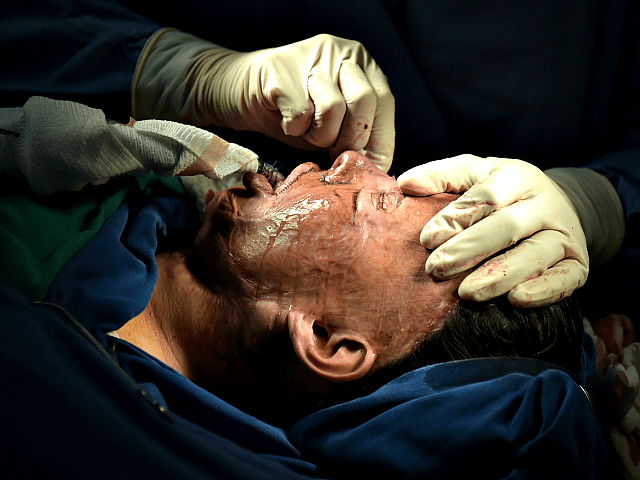The number of acid attacks in the capital is at record levels, having increased over tenfold in six years, with young children among the victims.
The figures were obtained by the Evening Standard following a freedom of information request to London’s Metropolitan Police Service and revealed that in 2012 there were 66 acid attacks, with that figure rising to 752 in 2018.
Of those, 17 attacks were against children under the age of 10, including a two-year-old boy who had acid thrown at him whilst his parents took him for a walk in his pram near his Islington home in 2017.
Between January 2015 and December 2018, across the 32 boroughs, Newham in east London came out on top with the highest number of attacks at 316; followed by Barking and Dagenham (146), also in east London; the East End borough of Tower Hamlets (113); and Hackney (91) which is divided into two parliamentary constituencies held by Labour’s Diane Abbott and Meg Hillier.
Such attacks include two that occurred on the same day between Christmas 2018 and New Year, when two men were injured in acid attacks in separate incidents, one in Hackney and the other in Tower Hamlets. In June 2019, attackers disguised in burqas threw acid at people in Walthamstow in the Borough of Waltham Forest, which is number seven in the top-ten list of attacks by borough.
While in April 2018, John Tomlin was jailed for 16 years for throwing acid at cousins Resham Khan and Jameel Muhktar as they travelled in a car in east London after celebrating Resham’s 21st birthday.
Dr Simon Harding, associate professor in criminology at the University of West London, told the newspaper that acid has become a weapon of choice, with the rise in acid attacks coinciding with a rise in knife crime in 2017 and 2018.
“It can be used in robberies, burglaries, revenge attacks, during thefts of mopeds or to intimidate witnesses,” the leading criminologist said, with the newspaper finding the data revealed that religious or racial hatred and domestic violence were also amongst motivations found.
While the form of assault has been more common in developing countries such as Bangladesh, Pakistan, and India — where it is used as a form of punishment in religious-based ‘honour crimes’, and in personal disputes — police revealed in 2017 that the UK was one of the world’s worst for acid attacks.
Government figures released last year revealed that there were on average 15 vitriolage attacks in the UK every day, with three-quarters taking place in London.
“London has sadly become the acid attack hotspot in the western world,” Dr Harding said of the trend.
The summer of 2017 saw a crimewave in the capital involving muggers on mopeds using acid during robberies, with one teen being responsible for five robbery acid attacks taking place in just 84 minutes in London in July 2017.
Nationwide, there were landmark court cases involving acid attacks, including the July 2018 first-of-its-kind conviction and sentencing to 17 years in prison of 19-year-old Xeneral Webster for manslaughter after 47-year-old nurse Joanne Rand died following an acid attack.
While a case in Worcester in July 2018 shocked the nation, when a father organised a “monstrous” acid attack on his three-year-old son, the father and five co-conspirators were sentenced and jailed in March 2019.
Despite the horrific injuries resulting from acid attacks and their growing prominence in the country’s criminal culture, some have sought to make light of them. Amidst the fierce political debating over Brexit ahead of the European Parliament elections in May, where Remain activists were throwing milkshakes at pro-Leave candidates, comedienne Jo Brand suggested that instead of the soft drink, someone should throw battery acid at Brexit Party leader Nigel Farage.
Mr Farage called the comments “incitement of violence”, but police investigating the remarks decided not to take any action.

COMMENTS
Please let us know if you're having issues with commenting.